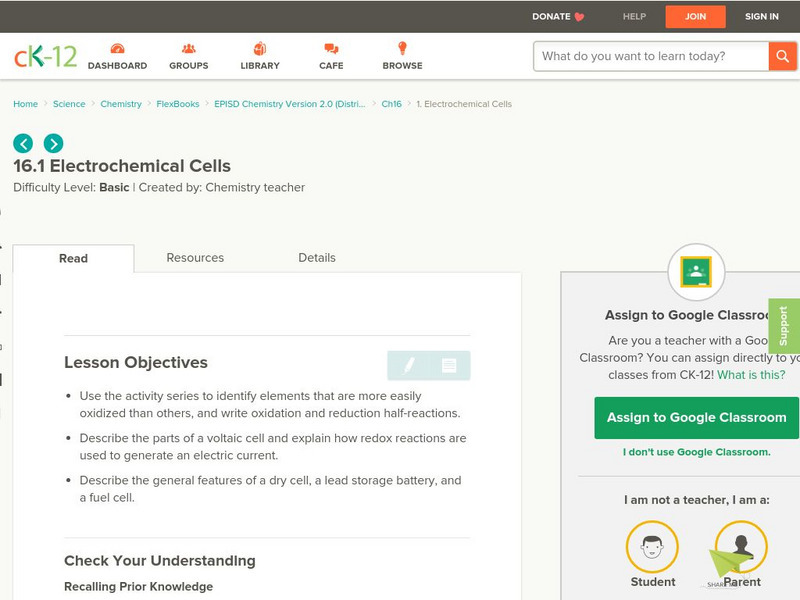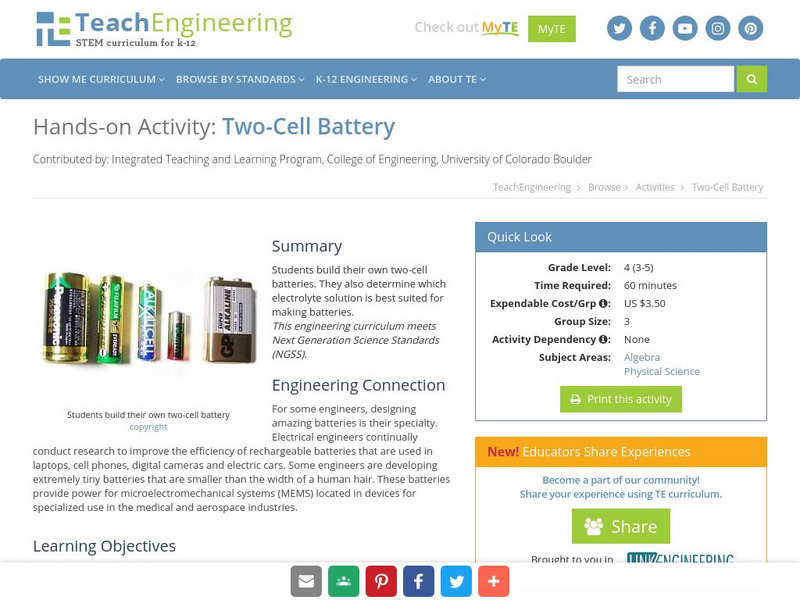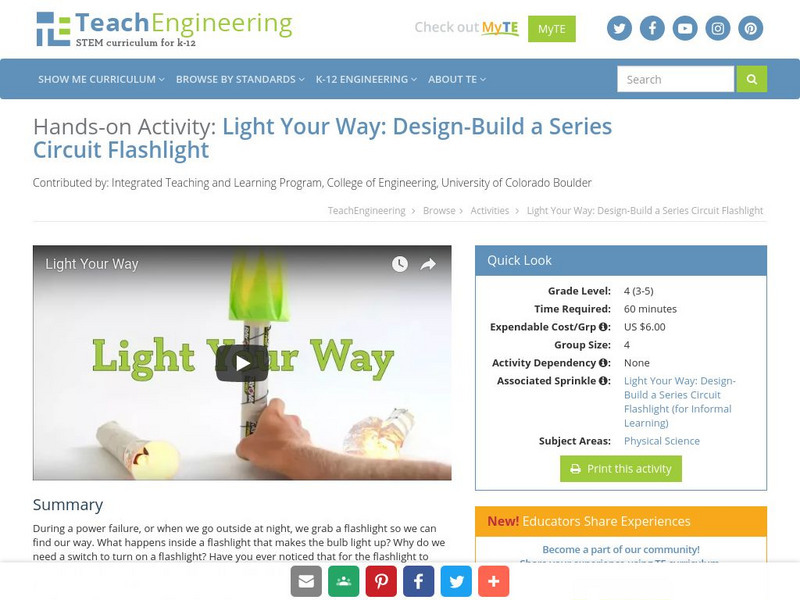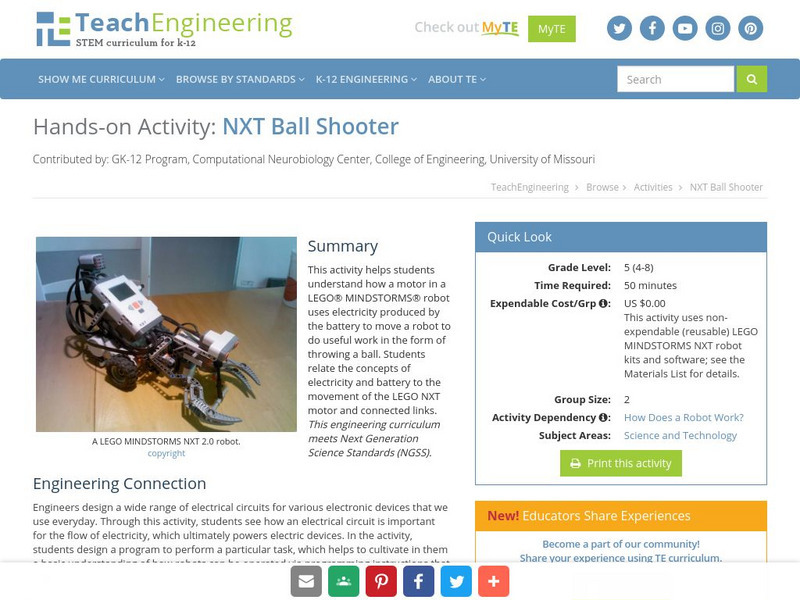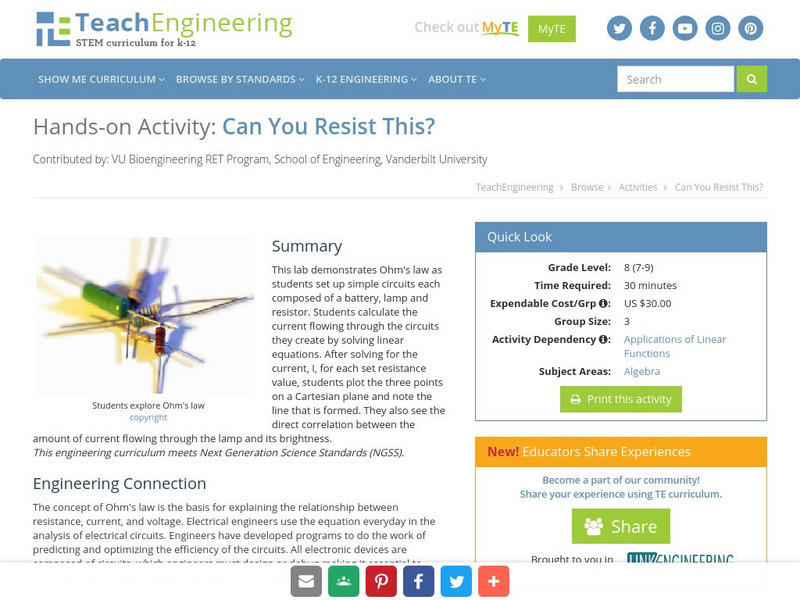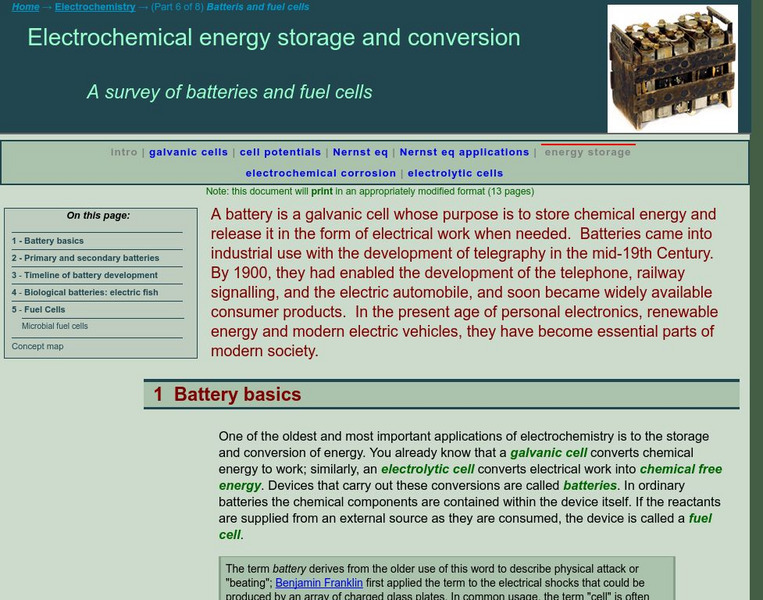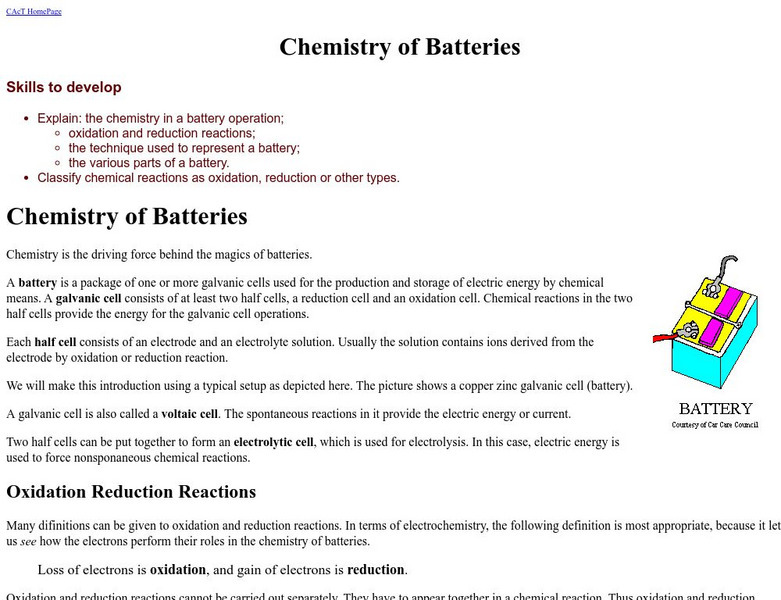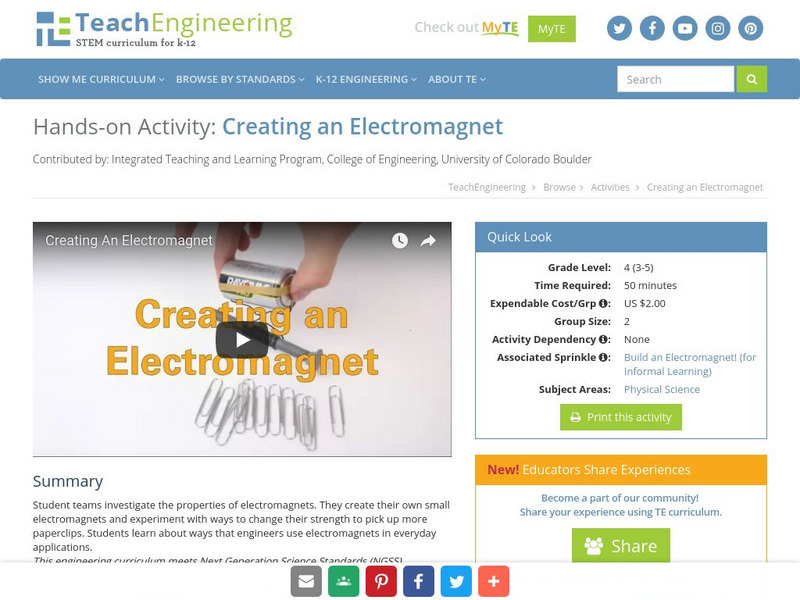Exploratorium
Exploratorium: Science Snacks: Penny Battery
In this experiment, students will learn how to make a battery with a water solution and two types of metal. This is then used to power an LED light. Includes video demonstration.
CK-12 Foundation
Ck 12: Electrochemical Cells
[Free Registration/Login may be required to access all resource tools.] Students use the activity series to identify elements that are more easily oxidized than others, and write oxidation and reduction half-reactions. Then, they...
DOGO Media
Dogo News: Battery of the Future May Be Made of Paper
Read about the development of a paper battery in Sweden. Includes video.
TeachEngineering
Teach Engineering: Two Cell Battery
In this hands-on activity, students build their own two-cell battery. They also determine which electrolyte solution is best suited for making a battery.
TeachEngineering
Teach Engineering: Light Your Way
When there is a power failure, or when we go outside at night, we grab a flashlight so we can find our way. What happens inside a flashlight that makes the bulb light up? Why do we need a switch to turn on a flashlight? Have you ever...
TeachEngineering
Teach Engineering: Nxt Ball Shooter
This activity helps students understand how a motor in a LEGO MINDSTORMS NXT robot uses electricity produced by the battery to move a robot to do useful work in the form of throwing a ball. Students relate the concepts of electricity and...
TeachEngineering
Teach Engineering: Can You Resist This?
This lab demonstrates Ohm's law as students set up simple circuits each composed of a battery, lamp and resistor. Students calculate the current flowing through the circuits they create by solving linear equations. After solving for the...
TeachEngineering
Teach Engineering: How Does a Robot Work?
This instructional activity introduces electricity, batteries and motors using a LEGO MINDSTORMS NXT robot. The associated activity guides students to build a simple LEGO NXT set-up and see the practical implementation of the concepts...
Rutgers University
Edison's Papers: Edison's Patents: Batteries
A full listing of all Edison's battery patents. Not just titles and numbers, but Adobe Acrobat copies of the entire set of drawings and text from each patent application. This is heirloom stuff. With the available magnification, you can...
Simon Fraser University
Chem1 Virtual Textbook: Primary and Secondary Batteries
As part of the General Chemistry Virtual Textbook, this site examines a variety of topics related to electrochemistry. In particular, this site explores a range of topics related to batteries including primary and secondary batteries,...
Concord Consortium
Concord Consortium: Stem Resources: Heat and Light From Electricity
Understand the energy transformations that happens when you light a bulb with a battery. Activity requires students to build a simple circuit and take temperature and time measurements. Lab includes procedure with questions that can be...
Wolfram Research
Wolfram Science World: Capacitor
A rather mathematical explanation of a capacitor. Gives all the appropriate formulae, with many hotwords for further info.
University of Colorado
University of Colorado: Ph Et Interactive Simulations: Battery Voltage
Take a look inside a battery and change the voltage to see what goes on inside. Read the voltmeter as little stick people move the charges from one end of the battery to the other.
Science Education Resource Center at Carleton College
Serc: Investigating Electricity
In this interactive activity, young scholars will explore electricity and be able to design and create a complete electrical circuit. Students will also learn what is necessary to light a light bulb. Creative thought, ideas, and,...
Science Education Resource Center at Carleton College
Serc: Modeling Emf, Potential Difference, and Internal Resistance
Interactive lecture discusses internal resistance which provides help to learners in developing an accurate model.
Other
Law School help.com: Torts: Intentional Torts
This website lists and describes different types of "Intentional interference with person or property": battery, offensive contact, false imprisonment, abuse of process, and breach of contract.
NC State University
The Engineering Place: Battery Making
Using simple materials, students will learn how to create batteries, and about the relationship between voltage and current.
University of Waterloo (Canada)
Computer Assisted Chem. Tutorial/chemistry of Batteries
A superb explanation of how a battery works. Discusses the associated chemistry which explains how a battery produces a voltage. Includes a series of "Confidence Building Questions."
National High Magnetic Field Laboratory
Magnet Academy: Daniell Cell
English chemist John Frederick Daniell came up with a twist on the simple voltaic cell that resulted in a longer-lasting source of power.
National High Magnetic Field Laboratory
Magnet Academy: Edison Battery 1903
Although it never quite measured up to expectations, the Edison battery paved the way for the modern alkaline battery.
Other
Earth Day Canada: Eco Kids: Battery Facts
Battery Facts provides helpful information about the benefits of batteries, how they work, and the concerns over the footprint they leave on the environment when they are not properly disposed of.
TeachEngineering
Teach Engineering: Completing the Circuit
In the everyday electrical devices we use - calculators, remote controls and cell phones - a voltage source such as a battery is required to close the circuit and operate the device. In this hands-on activity, students use a battery,...
TeachEngineering
Teach Engineering: Building an Electromagnet
Student teams investigate the properties of electromagnets. They create their own small electromagnet and experiment with ways to change its strength to pick up more paper clips. Students learn about ways that engineers use...



